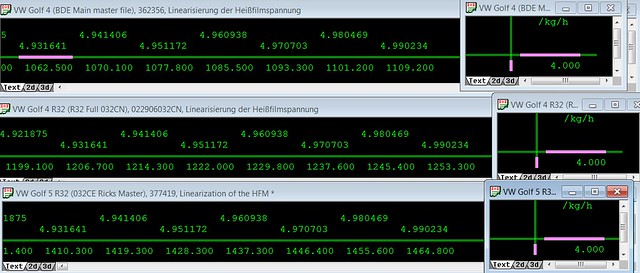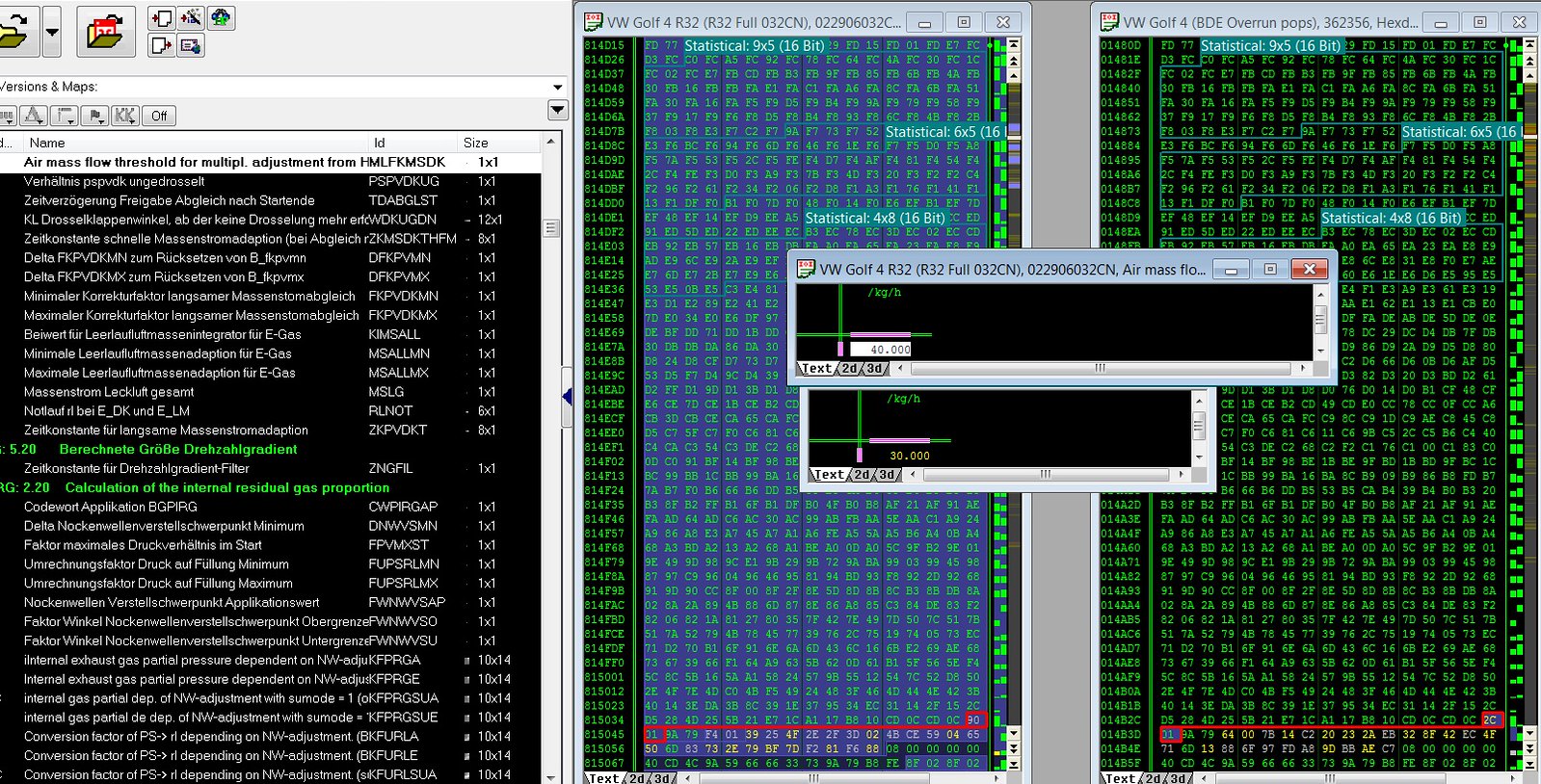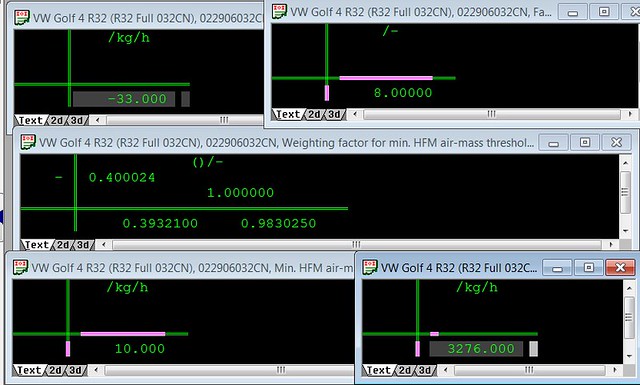Interpretations of the ecu are not the only things to consider, laminar v turbulent flow and what the sensors are capable of are one thing to take into account, if there's too much turbulence then the sensor(s) will not get correct readings no matter whether or not the map is scaled correctly, hence why things like pulsations maps exist.
In the Bosch guide I put up in the noob area somewhere, it also talks about the HFM series changes from older Motronic to the often used HFM 5 series too, where they changed the design to a glass ceramic substrate one due to (possible) turbulence and reading problems (as many VR6 induction/turbo owners may have experienced), plus, you need to clarify what you mean by the term "VR6 MAF" too!
In markets there are generally;
2.8 12v AAA - mk3 Golf's universal (I think) and I think the US used them in the Corrado,
Here in UK we had the ABV 2.9 in the Corrado's
Both of the above (I don't do much on older Motronic VR6 so correct me if I am wrong), they used a 256x1 map v's a 512x1 MLHFM in ME7.
Generally, here in the UK at least, when people say VR6 we picture those older AAA/ABV types, mk4 cars were referred to as V6 4 motions, I think the US are fwd(?) so are generally used as a term for the mk4's, you (US) also had the ME7.1 12V MK4's whereas we didn't and I can't remember what the MAF maps are but if 7.1 then I guess they have a 512x1 MLHFM.
So..... the term "VR6 MAF" can have profound differences from the start for people looking into it, there are differences to take into account just on the language and marketing differences alone, is it an old none ceramic/glass substrate version of maf used on older Motronic - will it be prone to more problems of turbulent flow which means you are somewhat downgrading, or is it a later HFM 5? Do you need to rescale due to older Motronic 12v's having the 256x1 map etc? Few things to note there for DIYers!
Everything with this tuning is essentially air/fuel tuning, so you make changes in air, then what need's to be done? Spark needs to be timed with the air/fuel but are the air/fuel interpretations correct or tuned to any degree after changing? I see little mention on some value differences in HFM maps, you can get low flow levels the same on HFM 5 for example;
 MLHFM & Min mass V6 R32 mk4 mk5
MLHFM & Min mass V6 R32 mk4 mk5 by
Rick B, on Flickr
But does that mean other values/calculations are the same like the min flow 4kg/hr above, or are there other values that are different and have you checked them?
 Air mass flow adj HFM & TB BDE v BFH
Air mass flow adj HFM & TB BDE v BFH by
Rick B, on Flickr
 DHFM Airmass factors R32 HFM
DHFM Airmass factors R32 HFM by
Rick B, on Flickr
So, once you understand not only the variances in map values, but also design and functionality, then it's off to the other part of the main tuning, the fuel in "air/fuel mixture"! You've checked the air side out now, so what about fuel?
You can change the main maps of certain things, better if you do with maps like MLHFM, but you can also change a single value which, in turn, changes the interpretation of full maps etc - easier than changing a lot. So once you've changed the interpretation of the air flow by upgrading the maf, you've checked the related maf maps/values and are, at least, aware of what these changes represent in terms of air flow to original, then what does this mean in terms of fuel?
It's all about air/fuel don't forget and lambda is a reference to mass ratio, so have you looked at those area's too, what any changes would make to this fuel mass or interpretation thereof?
On ignition, you have things like the time it takes to build up a charge and then release it, so if upgrading your coils for example, these times could be different! Therefore if you are adding R8 parts or whatever is the current flavour of tune, then when it releases spark, you are still aiming for proper deflagration over detonation, so yes, the spark is very much important or at least the time it does!
https://en.wikipedia.org/wiki/Deflagration_to_detonation_transitionhttps://www.youtube.com/watch?v=jdW1t8r8qYcBut before you even look into these things or upgrade things like coils, have you made sure the main aspect of tuning is sound or have a good grasp in what differences there are between parts/ecu values? I guess it's why it's 1st on the wiki!
https://s4wiki.com/wiki/Tuning#FuelingDidn't mean to hijack - but you want to build yourself a good def file, you are doing air changes, go through all hfm/luft maps to see what relates to what, then check fuelling correlation, THEN look at spark times/upgrades there as a base.
P.S. That's about as succinct as a guide to the basics as I could muster if you're looking into these things as a noob;
http://nefariousmotorsports.com/forum/index.php?topic=10419.0title=